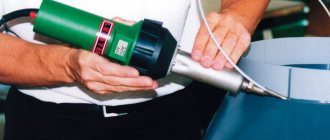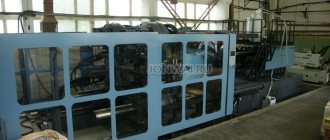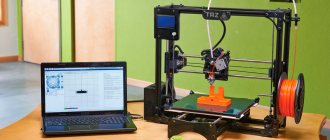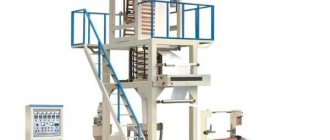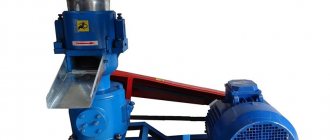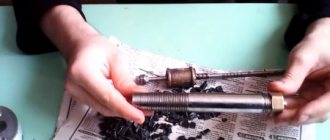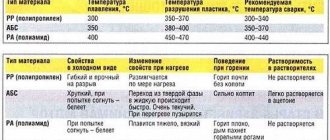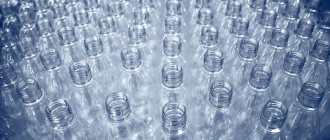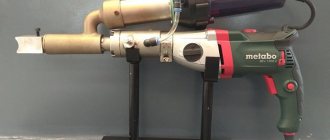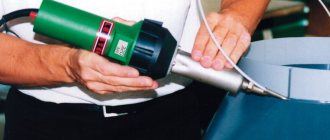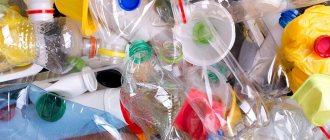The development of technological progress has led to the emergence of various technologies that make it possible to produce products with improved performance characteristics. One of the most popular processes at the moment is extrusion. It represents the technological process of processing plastics, from which various parts are made, and also various profile products are produced.
The technology itself consists of preparing an alloy from polymer materials and then pressing it through special nozzles that give it a certain shape. The main element of the line for the production of plastic products is the extruder.
Operating principle and design
It should be said that extrusion is far from a new technology. Its history goes back more than six decades. During this time, a large number of machine designs were created, with the help of which its implementation is ensured. The operating principle of this device is based on the essence of the technological process itself.
The extrusion technological process is a complex physical and chemical process, which is affected by mechanical forces under conditions of high temperature and moisture . Heating of processed products occurs due to the fact that the mechanical energy generated during the fight against internal friction, as well as during plastic deformation, is converted into heat.
There are several variable parameters during the extrusion processing process. The most important ones include:
- composition of raw materials;
- humidity;
- its nature.
During the extrusion technological process, changes may occur:
- material temperature;
- pressure;
- intensity and duration of impact on raw materials.
Performing welding
If the extruder is not new and you have used it before, remove any remaining additive that you used before from the reservoir.
You need to do this even if you used the same material as this time. If the additive is heated again, its strength will decrease.
Then you need to remove the cold start lock, warm up the device and feed parts to the temperature at which you are going to work, and set the performance settings.
While you cook, maintain the required tilt of the extruder. It will depend on what type of seam you choose. If you've been working for a long time and need a break, place the welding machine on a welding stand.
If the pause is long, reduce the temperature of the device by about 45 degrees. The heating of the additive will stop, but there will be no problems with continuing the process.
Extruder operating principle
In itself, such equipment is an electromechanical device, the main purpose of which is to carry out the process of molding profile parts from plastic or its semi-finished products . The general device of a plastic extruder contains the following components:
- body of the heating system for polymer materials . Conventional resistive or induction systems can act as the main source of thermal energy when carrying out this technological process. When using the latter, the occurrence of high temperatures occurs due to the induction of high-frequency Foucault induction currents onto the body;
- load node Through this element, feedstock enters the housing cavity in various ways;
- working body . It creates the necessary pressure in the equipment, which ensures the movement of raw materials directly from the loading unit to the nozzles, which form finished products from polymer materials. When using an extruder, various physical principles are used, since this device can have different designs - screw, disk, piston. At the moment, screw extruders are most often used;
- extrusion head . In another way, experts call it a spinneret. It is this that ensures the shape of the products that is obtained upon completion of the technological process;
- mechanical drive . In this equipment it is represented by a motor and a gear system. Thanks to it, the creation and transmission of the necessary force to the working body is ensured;
- control and management system . Thanks to it, the required technological regime is maintained.
The starting material is usually granules and powder . They are loaded into the equipment, and then under the action of the working element they move into the working area of the housing. There, under the influence of pressure, friction force and temperature, the feedstock supplied from outside is heated, and in the process of its melting, a state arises that is required by the conditions of the technological process.
During the movement of the feedstock in the cavity of the housing, it is thoroughly mixed to the state of a homogeneous homogenized mass.
Under high pressure conditions, the melt is forced out using forming heads and mesh filters. As a result, final homogenization is ensured and the material is given a given profile.
After this, the material is naturally cooled or a forced method is used, followed by polymerization. The end result is products that have the required configuration and have the specified mechanical and physical properties.
Watch a video about the company
Plastic extruders are equipment designed for processing polymers. Plastic products of various types, after expiration of their service life, are disposed of in most cases. To prevent contamination from residues of decomposing polymers, they are recycled for reuse in technical fields. Plastic extruders produce pellets from recycled plastic that are used to make new products. Machines differ in cost, which depends on performance, characteristics and the price of components. You can buy equipment of various configurations suitable for processed raw materials.
Processing of various types of polymers occurs on machines equipped for a specific type of plastic. The characteristics and components of polymer extruders are designed to maximize the purification of the molten material, mix until uniform and produce high-quality granules. Despite the difference in equipment and price of the machines, the processing process is the same.
Extruders for polymers are selected for processing based on the following main parameters:
- Number of processing stages - single-stage or two-stage;
- Type of processed raw materials - hard or soft;
- Number of screws used - single screw or twin screw;
- How the granules are cut - using a strand machine or water ring cutting;
- Cost - the opportunity to buy equipment at a budget price or a professional machine.
Before processing in an extruder, plastic waste undergoes preliminary preparation. Large products are crushed into small parts, crushed in special machines and cleaned using washing equipment. Drying of raw materials is mandatory to prevent moisture and unwanted impurities from entering the granule composition.
The prepared plastic is loaded into the receiving hopper, where a part of the screw called the feeder is located. This zone provides the supply of material for further processing in a plastic extruder. There is also a drainage system through which moisture is removed if it comes with the polymer.
An important stage of the work is melting the plastic and obtaining an extrusion. Extrusion is achieved by means of heating elements installed along the screw. The heating elements are heated to the optimum temperature. Soft and hard plastics melt at different temperatures and undergo different types of processing to produce high-quality pellets. Thus, the characteristics of the raw material influence the shape of the screw applied to specific polymers. For fused hard plastics, a single-turn screw is used and the ridges are spaced about 9 centimeters apart. Such parameters are applicable to hard plastics, since they have high flowability and during processing a continuous extrusion flow is ensured without interruption. For soft polymers, a screw with two turns is used, with a distance between the ridges of 7 centimeters, which allows compacting light and soft fused plastic. This design allows the polymer extruder to process plastic continuously and without pulsation. Design solutions can also be used when the thickness of the screw increases, reducing the height of the ridge, which promotes better mixing, or sharply decreases - this solution is used for degassing polymers. The distance between the turns along the length of the auger can narrow and expand, and the auger itself can increase and decrease in thickness more than once. For greater productivity, two screws can be installed on one cascade.
At the end of the screw, degassing must occur to obtain a uniform granule without bubbles. A filter is installed at the end of the first cascade to remove contaminants embedded in the material. At the next stage, the extrusion is fed through the output feed, from where it flows into the receiving window of the next cascade. At the second stage, melting occurs again at a fixed temperature, mixing and purification using a filter. Next is the final stage of production, which depends on how the granules are obtained - by the strand method or by hot, water-ring cutting.
On plastic extruders that produce pellets using the strand method, the extrusion is extruded through a forming head and takes the form of strands. The threads are passed through a cooling bath where they harden and are ready to be cut into pellets. A strand cutter installed at the end of a polymer extruder pulls the threads with rollers and cuts them into granules. Cutting is carried out using a chain cutter using knives or a milling cutter.
Extruders for polymers with water ring cutting are more professional machines with higher productivity. After passing the second stage, the extrusion is also extruded through the forming head in the form of a ring, but still in a hot state. A knife rotating in a ring cuts off the barely pressed polymer, and it immediately looks like finished granules. Once in the water, the granules immediately cool down, and passing through the drying unit they are released from the line ready for further use.
Plastic extruders that process soft waste are additionally equipped with compactors for encapsulating raw materials and increasing flowability. Other additional components that extruders can be equipped with help speed up the processing process. For example, loading into the receiving hopper is possible using a conveyor, which facilitates work and automates the process, and drying for strands of threads will allow you to further dry them until you obtain a granule. All machines for cutting, shredding and washing waste plastic products can complement the extruder for on-site processing and be used as a complete line.
The productivity of strand extruders for plastic varies from 140 to 500 kilograms per hour. The cost of producing one ton of pellets starts from 34 and reaches 440 kW. This type of equipment can be placed compactly in a limited space, since its parts are not fixed. The productivity of plastic extruders with water ring cutting varies from 250 to 700 kilograms per hour, and electricity costs start from 90 kW per ton and reach 440 kW.
Types of extruders
Modern models of extrusion plants may differ from each other both in the design of the working body and in their purpose.
Single screw
Among all types of extrusion equipment, the most common is screw. Such machines satisfy all the requirements of the extrusion process. In these units, a screw is used as the main working body. Experts call it an Archimedes screw . Many people know this working element very well from home meat grinders.
When using an extruder for the production of plastic products, the screw blade captures the raw material in the loading zone, and then it moves sequentially along the entire length of the housing cylinder, starting from the heating zone through the homogenization and molding section. Depending on the features of the technological map that the equipment has, as well as the type of raw material used for the production of products, screws can have several design options - conical, cylindrical and normal high-speed.
Augers that taper toward the exit can also be used. For this equipment, experts consider the ratio of the working diameter of the screw and its length as the main parameter. Augers also differ in the pitch of the turns and their depth.
The main disadvantage of a single screw extruder is that it is not always possible to use them. For example, if semi-finished powder products are used as the starting raw material, then the presence of one screw in the equipment does not allow mixing the mass during the process of its melting and subsequent homogenization. In such cases, the choice is made in favor of twin-screw extruders.
Twin screw
The peculiarity of this equipment is that its screws are interlocked. Therefore, when using such extruders, it is possible for the screws to perform parallel and counter rotational movements. These working parts of the equipment can be straight or conical.
The use of such machines leads to the fact that during the heating process of the feedstock, its mixing and homogenization is carried out more thoroughly. Ultimately, a homogeneous and degassed mass arrives at the head for molding products.
The following point should be noted: in certain technological processes, extruders with a larger number of screws can be used - up to 4. In addition, a planetary automatic machine is often used, when the number of screws rotating around the central screw reaches 20.
The need to use such equipment arises when certain types of plastics are used as feedstock, which tend to break down when exposed to high temperatures. In other words, they may lose their basic physical qualities. Thus, the use of such extruders ensures heating of raw materials due to friction and high pressure.
Production of PVC profiles
Currently, plastic and composite profiles are in demand. In most cases, manufacturers make them using the extrusion method. To manufacture such products, depending on the material used, as well as the complexity and shape of the product, single- or twin-screw machines are used, which have corresponding molding heads.
The range of products produced using extruders is quite wide, ranging from thin threads and strips to sheets of large panels that have a profile of complex geometry. Plastic windows and doors, produced today by many companies, are assembled using PVC profiles, which are made on extrusion equipment.
When producing PVC profiles, many manufacturers add special components to the polymer composition, which makes it possible to produce complex composites. For example, today many manufacturers produce wood-plastic products, which are often used for the manufacture of various building structures.
Pipe manufacturing
In an area such as the production of tubular products, an important condition is the absence of gas bubbles in the homogenized mixture. For this reason, manufacturers equip extruders that are used in the production of such products with degassing systems. In most cases, screw installations are used. Among other things, barrier screws are used, which ensure reliable separation of the solid semi-finished product from the completely melted one. Due to this, the homogeneity of the composition is maintained, which has a positive effect on the quality of the manufactured pipe products and its performance characteristics.
Extruders for polyethylene
All films made from polymer materials are produced by companies exclusively using the extrusion method. To produce such products, a blow molding extruder is used. For equipment used for the production of stretch film, the forming unit may look like a narrow slit. When using such equipment, the output is a single-layer film that has the required thickness and width parameters.
Some models may use round slotted dies of large diameter. When using mini-extruders, it is possible to obtain film with a sleeve width of up to 300 mm and a thickness of 600 microns. Such devices have compact sizes, which makes them possible to install even in a small room.
Extrusion lines
In industrial settings, extrusion equipment should be considered as the main component of the line for the implementation of this process. In addition to the main equipment - the extruder, it also includes a whole set of other mechanisms and devices:
- winding and cutting mechanisms. They are used to bring products into the form required for warehousing and transportation;
- marking and laminating systems of various operating principles;
- mechanisms for drawing finished profiles;
- cooling system. Its installation is carried out at the exit of the extruder in order to increase the speed of the polymerization process of finished products. These systems can be of various types - air or in the form of a cooling bath;
- raw material preparation and loading system. In some cases, the semi-finished product must first be subjected to a drying procedure and subsequent calibration before feeding it into the loading hopper.
Other mechanisms can be used as part of the equipment, as well as technological devices can be used to automate the continuous production process.
General structure and principle of operation of the equipment
Extruder is a rather complex electromechanical device designed for processing used polyvinyl chloride and producing plastic profile small granules. Such polymer
can be used in the future for the new
production
of various
PVC
products or for organizing the storage of raw materials for their subsequent sale.
production lines
raw materials from recycled
plastic
.
Russian- made
unit fully complies with the requirements of quality, reliability and durability, and the use of domestic components, components and assemblies allows reducing the cost of the equipment.
The single-screw
is the most popular and in demand , as it is the simplest, most reliable and trouble-free in operation, allowing the production of high-quality polymer raw materials using
the extrusion method
.
Summing up
Extrusion technology is quite popular nowadays. It is used in the production of various products. It is mainly used for the manufacture of plastic products. Plastic windows and doors, familiar to everyone in our country, are made using this process. To produce products, a device such as an extruder is used. This equipment has a simple design, so making an extruder for plastic with your own hands is a completely feasible task.
The peculiarity of this process is the preheating of the raw material, which is then subjected to a melting procedure under conditions of a certain temperature and pressure. Next, the polymer mass is pressed through molding nozzles, which makes it possible to obtain products with the desired physical and qualitative characteristics.
Why should you order from us?
Customers purchasing our equipment from our organization will appreciate all the positive aspects of the order:
- Provide full order support.
- Training your staff to ensure maximum efficiency on our lines.
- Warranty and post-warranty service.
- An individual approach to the selection of equipment to solve the problems of each individual client.
- Assistance in developing recipes.
- Work with our staff of technicians and adjusters with over 15 years of experience.
Our organization has extensive experience in independently producing products. This means that cooperation with us, in addition to the favorable cost, gives you the opportunity to select the equipment that best suits your purposes.
